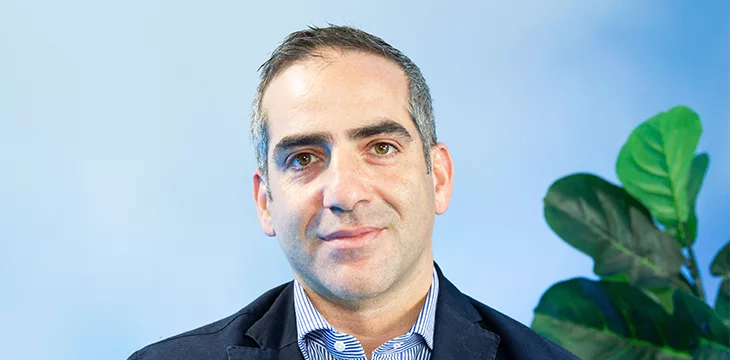|
Getting your Trinity Audio player ready...
|
The United Nations’ World Food Programme (WFP) has been using blockchain technology to deliver assistance safely and securely since 2017 through an initiative called Building Blocks. It’s a privately managed blockchain network which allows various humanitarian organizations to coordinate efficiently, while allowing people to simply access their essential needs.
As Houman Haddad, Head of Emerging Technologies at WFP explains, Building Blocks is “a humanitarian blockchain network which aims to, in a neutral manner, bring various actors together as hundred percent co-owners, co-operators and co-governors.”
On this episode of CoinGeek Conversations, Charles Miller finds out how multiple agencies use the private blockchain to enable a cohesive working environment while at the same time, allowing people to receive different types of assistance with less complexity.
As Houman points out, “By putting the people we serve at the very center, gaining a common visibility on who’s assisting whom, we can coordinate that assistance to ensure more equitable outcomes and make the redemption process simpler for the people who are dependent on that assistance.”
Oftentimes, humanitarian agencies serve people who lack digital literacy or don’t have access to phones or connectivity. So how does the system work? As Houman explains, “The way we’ve designed our system is so that the people we serve don’t need any of those things—or don’t necessarily need any of those things—but we do need connectivity and a device at the point of distribution.”
In the current system, the UNHCR, which has a mandate for protection of refugees, collects documents (if any), biographic and demographic data, as well as biometrics from every refugee family who in turn receive an identification card that only contains a pseudonymous code. WFP then creates a blockchain account using the pseudonymous code for each refugee family. WFP’s onchain work begins as they deposit food tokens into a blockchain wallet associated with the family’s blockchain account. In effect, WFP will not have the refugees’ names or birthdates, therefore protecting every individual’s identity.
As for redeeming entitlements, an individual can go to a supermarket, simply select items and checkout using the UNHCR ID card. WFP then needs to authenticate the transaction through various methods, depending on a country’s limitations. “In Jordan, it’s by iris biometrics. In Bangladesh, it was finger biometrics before COVID. But it can be anything. It can be a QR code. It could be a simple pin,” he says.
Houman envisions a future where individuals take complete ownership of their accounts by owning and controlling their own private keys. “At that stage, we won’t simply hand them their private key, they will generate their own private key and we will transfer ownership to them,” he says.
Houman is also keen to point out that the use of a private blockchain ties in well with the United Nations “do no harm principle, at heart.” As he points out, “We store non-sensitive data on chain, although it’s private and we protect it heavily.”
While the UN’s humanitarian initiatives make use of private blockchain technology, Houman admits that he favors the concept of a public blockchain for its self-sustaining ability, not dependent to any organization.
Despite recognizing the advantages of a public blockchain, Houman remains steadfast with the use of private blockchain for WFP. While working on a proof-of-concept initiative in Pakistan, backed by Ethereum technology, Houman and his team quickly discovered issues with speed and cost. He also wasn’t keen on the fact that the transactions, although pseudonymous, are publicly visible.
Houman, however, is not closed off to the idea of using a public blockchain. As he says “if a public blockchain were able to solve the speed, cost, at the same level of security and allow the same level of privacy as we have, I think it would be a better solution because then we don’t have to operate our own infrastructure.”
Hear the whole of Houman Haddad’s interview in this week’s CoinGeek Conversations podcast or catch up with other recent episodes:
You can also watch the podcast video on YouTube.
Please subscribe to CoinGeek Conversations – this is part of the podcast’s new series. If you’re new to it, there are plenty of previous episodes to catch up with.
Here’s how to find them:
– Search for “CoinGeek Conversations” wherever you get your podcasts
– Subscribe on iTunes
– Listen on Spotify
– Visit the CoinGeek Conversations website
– Watch on the CoinGeek Conversations YouTube playlist

 12-26-2025
12-26-2025 




